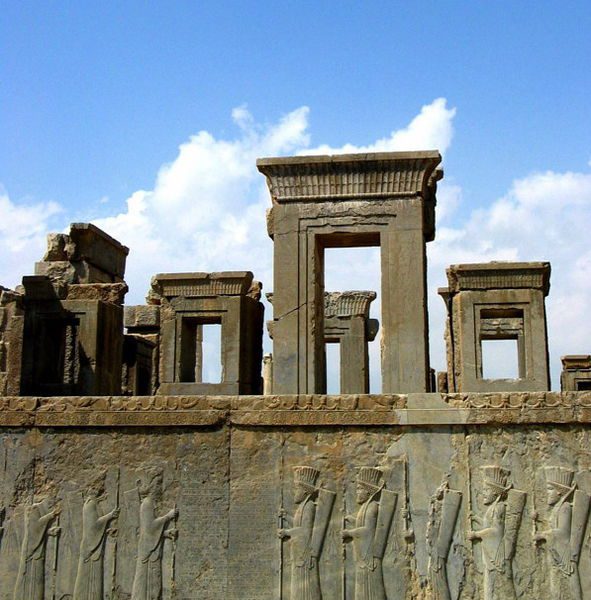
Rough notes for The Book:
Iran – officially, since 1979, the Islamic Republic of Iran, but also historically known as Persia – is the home of one of the greatest and richest civilizations of human history. That civilization began with the Elamite kingdoms of the fourth millennium before Christ, but it began its rise to greatness in the seventh century BC when the region was unified by the Iranian Medes. By the sixth century before Christ, the Achaemenid Empire, founded by Cyrus the Great, extended from southeastern Europe to the Indus River Valley.
It was in the sixth-fifth century before Christ that the faith known as Zoroastrianism (or, sometimes, as Mazdeanism) entered into the historical record. Named after the prophet Zoroaster (or Zarathustra), who probably lived and taught in the second millennium before the birth of Jesus, Zoroastrianism would remain the state religion of Iran for more than twelve hundred years, from almost 600 BC until roughly 650 AD.
Zoroastrianism survives to this day, with between 150,000 and 200,000 adherents. In fact, it may even be enjoying something of a small and rather silent resurgence among those Iranians who wish to affirm their Persian nationalism while defying the Islamist regime that rules their country.
Zoroastrianism is a monotheistic religion of a pronouncedly dualistic kind – focused, for example on the opposition of good and evil, light and darkness, virtue and vice. In it, the creator God is known as Ahura Mazda (“Wise Lord”) and he is locked in cosmic battle with Ahriman or Angra Mainyu (“Destructive Spirit”), whom he will ultimately defeat.
Alexander the Great seized the Iranian realm – among many others! – in the fourth century BC, introducing Greek intellectual culture to the area. Iran was dominated by fragmented Hellenistic states until the emergence of the Parthian Empire about a hundred years later. For centuries, the Parthians represented a serious threat to the eastern border regions of the Roman Empire and, later, of their Byzantine successors. Finally, in the third century after Christ, the Sasanian Empire arose.
It was under the Sasanians that the prophet Mani was executed in AD 274. His teachings survived him, however, in the form of what is called Manichaeism, and they quickly spread across the Aramaic-speaking regions of the Middle East and beyond, flourishing especially between the third and seventh centuries AD (i.e., between Mani’s own life and the advent of Islam). At its height, Manichaeism could justly be decribed as, if not a global religion, certainly very near one. Manichaean churches and Manichaean scriptural manuscripts have been found at sites from the Roman Empire in the West to China in the East. For a while, Manichaeism was a serious rival to Christianity; St. Augustine (d. AD 430), for example, although raised as a Christian (by St. Monica, no less), converted to Manichaeism at the age of seventeen and didn’t return to Christianity until he was 31. In the Far East, the Manichaean faith survived for a much longer period, finally fading from visibility in south China under the Ming Dynasty in the fourteenth century AD.
Like Zoroastrianism, Manichaeism was strongly dualistic – dualism, indeed, is typically recognized as a signature characteristic of natively Iranian religions in their various forms — telling of a struggle between the spiritual world of goodness and light, on the one hand, and, on the other, the material world of evil and darkness. Salvation is effected by removing light (including the souls of the righteous) from the world of matter and returning it to its native world of light, from which it has fallen.
The Sasanid Empire remained a significant world power over the next four hundred years, until the entrance of Islam into the Iranian plateau put an end to it. The advent of Islam also led, very quickly, to the suppression of Zoroastrianism – which, judging from the relatively weak resistance that it offered, may have been largely the religion of the unpopular Persian aristocracy much more than of the masses – and of Manichaeism, which was regarded as a serious theological threat by Muslim thinkers for centuries after it had essentially disappeared.
Posted from Newport Beach, California










